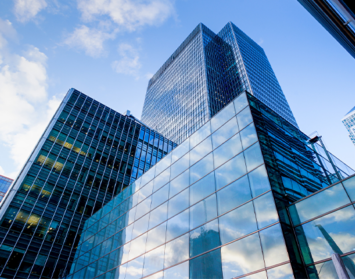Is it the right time to buy a building for your business? After representing companies in leasing space and buying buildings for the last 22 years, this is the question we asked ourselves with our lease expiring in January 2012.
There are three considerations when looking to buy commercial real estate to house your business. The first two are around the strategic fit and risk of buying versus leasing, and the third is financial. These issues of fit are more material than the economic considerations. A company might get a good deal on a piece of real estate, only to find that the entire capital structure of their company, and potential exit opportunities for the business owners and investors, are marred because the financial decision to buy wasn’t a strategic fit.
Strategic fit of owning real estate.
To consider purchasing a building, a business has to have at least a ten year expected utilization of that facility. Thus, a fast growing or volatile company should generally not buy a building. Similarly, a company that expects to be sold as an “exit strategy” would also not be the right profile to buy real estate. Third, a company that has complex ownership structures like venture capital investors, private equity, or private angel investors should not generally buy real estate. Those shareholders don’t have financial objectives to own real estate—those financial investors in the company are looking for returns in the success of the business, versus speculating in real estate.
In our case, Hughes Marino is a privately held company with a small set of shareholders that has become very stable and mature, with us working in commercial real estate in excess of 22 years. More importantly, we have the expectation to do business in our current structure for the rest of our careers without an anticipated business “exit” along the way–for another 20-25 years. Thus, buying real estate was a strategic fit for us.
Risk profile.
Owning real estate also has to match your personal financial risk profile. When you buy a building to house your business, you are relying on the strength of your business as the tenant to pay you a lease payment that can cover the mortgage and all of the building’s operating expenses. We often see people do the math where a mortgage payment looks cheaper than a rent payment. What they forget is that office rent payments include the operating expenses of taxes, insurance, water, gas, electricity, janitorial, landscaping, capital repairs and maintenance—a mortgage payment does not, and those operating expenses can add another 40%-50% more costs on top of the mortgage.
Commercial real estate is a highly illiquid asset. It can easily take 6-12 months to sell a building and potentially longer to get a price you might really want. One of the financial risks of a business owning real estate is that you typically have a personal guarantee of any loan to make the purchase. One feature of a SBA loan is that any shareholder owning in excess of 20% of the business has to personally guarantee the loan. If you default on a building loan that you have personally guaranteed, which would generally be the result of a downturn in your business that can’t pay the lease, and thereby you can’t pay the mortgage, the bank is coming after your house, your cars and your children’s education funds.
Another potential risk around buying real estate is that often companies will buy a building that is much larger than they need for their own company’s occupancy. While this strategy might work great for a growing company, you need to understand the uncertainties of being in the landlord business – such as landlord leasing expenses and lease up downtime. You might find a company that needs 10,000 square feet, but they’re looking to buy a 20,000 or 30,000 square foot building. I’ve seen many companies over the years get into trouble by purchasing a building that is significantly more their own occupancy requirements.
It is important to identify the potential problems and solutions up front, and also buy the building at a price that takes into consideration conservative assumptions about the lease up of vacant space, or realistic costs and likelihood of renewing existing tenants. For us, buying a 12,000 square foot building met all our present and future growth needs.
Making the math work.
Buying a building might be a prudent economic decision. There are depreciation benefits of owning, but those depreciation benefits are spread over 39 years (or less depending on current tax code and cost segregation techniques), versus a company as a tenant in a lease just expensing lease payments in the year in which they’re made. There is also the upside for potential appreciation of the real estate, but far too many people overpay for buildings expecting that they’ll always be worth a lot more in the future. Companies and people that bought office buildings for $400-$600 per square foot are finding that those buildings are worth half that amount today, or less.
There is no guarantee that real estate will always be worth more in the future. When we made assumptions about purchasing our own building for the company, we assumed that there would be no capital appreciation over the life of the asset. The financial commitment had to make sense on its own merit without skewing the math because of overly aggressive appreciation assumptions. At the end of the day, we figured we’d be signing 4-5 more five year leases over the rest of our careers, and it was more prudent to control our costs over that timeline by owning the building and paying off the loan. Ultimately, we will be paying ourselves rent versus paying a landlord.
David Marino is senior executive vice president of Hughes Marino, a global corporate real estate advisory firm that specializes in representing tenants and buyers. Contact David at 1-844-662-6635 or david@hughesmarino.com to learn more.









